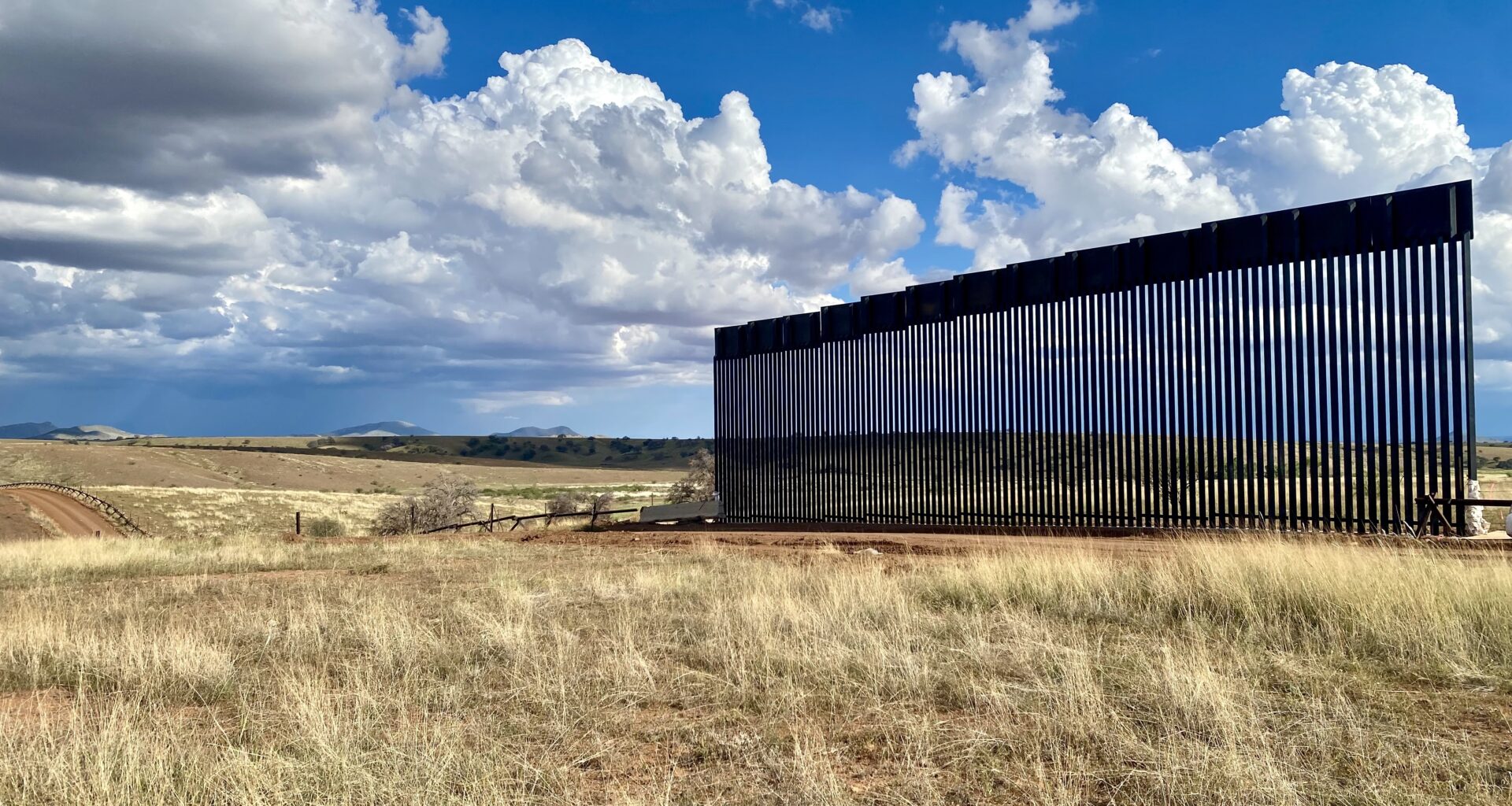
The new segment of border barrier began going up in the San Rafael on Monday, Sept. 15.
Danyelle Khmara
A July report from the Center for Biological Diversity says the area where the first section of 30-foot-tall steel bollards was erected Monday is home to federally endangered jaguars and ocelots, as well as black bears, pronghorns and mountain lions which roam between Arizona and the Sonora, Mexico, to find mates, prey and safety.
The Center is suing the Trump administration for waiving the Endangered Species Act, the National Environmental Policy Act and other environmental laws to quickly begin building the planned 27-mile border wall.
Russ McSpadden with the Center says one of the outcomes of previous border wall construction was drastically depleting local water tables, like in the desert wetland springs at the San Bernardino National Wildlife Refuge.
“Because of the way border wall construction happens, it functions above the law. It functions beyond the law,” McSpadden said. “All laws are waived. Construction crews didn’t have to take into consideration whether or not they might destroy a rancher’s well and leave them high and dry. They didn’t have to consider whether or not they would destroy one of the largest and most ecologically important cienegas.”
According to documents the Center received from U.S. Fish and Wildlife after a FOIA request, during border wall construction in 2019, the government expected crews to pump up to 700,000 gallons of water a day from the ancient aquifer systems for concrete and road maintenance activities, which drastically depleted water tables.
The current wall construction will cut across the Arizona National Scenic Trail near the Coronado National Memorial and twice cross the Santa Cruz River.
This is happening during a time of record-low border crossings. And during the record high numbers of apprehensions that happened at the end of 2023 and beginning of 2024, the remote area was not a place that saw high numbers of people crossing.
Conservationist Myles Traphagen says this section of border wall is different. As Wildlands Network’s borderlands program coordinator, Traphagen’s work focuses on protecting habitat for binational species like jaguar, black bear and Sonoran pronghorn.
Standing next to the first section of 30-foot border wall, erected last week, Traphagen pointed to a mountain peak and a valley on both sides of the border, which are habitat to rare animals recently spotted in the border region.
“When I looked to the south in Mexico, I saw Sierra Azul, and I know that there are jaguars there, and that that’s the northernmost breeding population of ocelot,” he says. “And now I’m also looking at some locations in the Huachucas, where I know jaguars have been photographed and ocelots. And I know those locations pretty specifically, and it’s been the first time that I’ve stood in one location and actually been able to see the connectivity diminish.”
The current border wall project is going up in one of the last unwalled places on the Arizona border with Mexico, which conservationists say will block migration for dozens of imperiled species.
